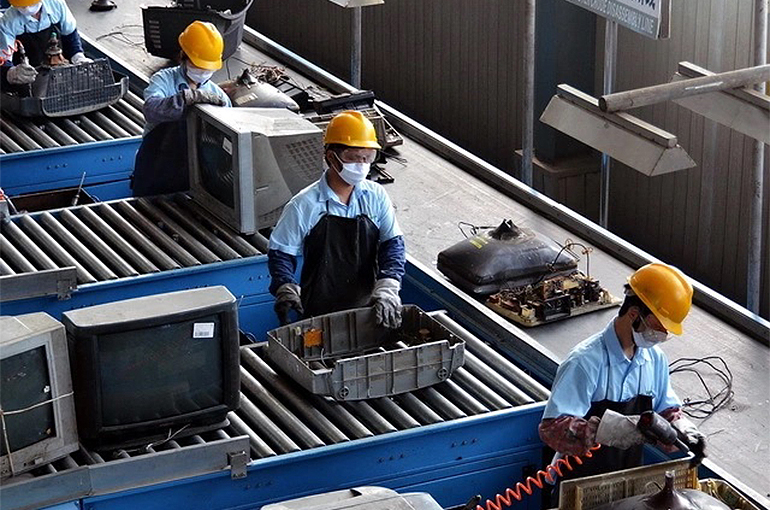 China's Home Appliance Recycling Funds Don't Cover Disposal Costs, Survey Shows
China's Home Appliance Recycling Funds Don't Cover Disposal Costs, Survey Shows(Yicai) Jan. 18 -- The funds receiving money from Chinese home appliance firms to finance the recycling of their products are struggling because money is not enough to cover the disposal expenses, according to a recent survey.
The income of funds for household appliance disposal reached CNY27.8 billion (USD3.9 billion) as of the end of 2022, while the sum they issued to recyclers was about CNY27.7 billion, according to the survey from the China National Resources Recycling Association. But with nearly CNY20 billion worth of arrears owed to the recyclers, the deficit ratio jumped to nearly 42 percent.
In 2009, China introduced a mechanism that expected home appliance firms to finance funds that would issue subsidies to recyclers to dispose five product categories -- televisions, washing machines, fridges, air conditioners, and computers -- to improve the country’s recycling and reusing system. The mechanism was implemented in 2011.
The number of dismantled and recycled products through this mechanism rose to 90 million units in 2022 from 12 million units in 2012, the survey showed.
Against the backdrop of financing difficulties, 15 of the 109 qualified recycling companies receiving subsidies suspended operation, according to the survey. Therefore, with the increased number of devices to dispose of and the falling number of recyclers, more and more home appliances are recycled through illegal means, resulting in higher environmental pollution risks.
Home appliance makers did not pay the funds enough money, an expert at the CRRA said. Between 2016 and 2019, the sales volume of the five types of appliances totaled nearly 2.1 billion units. Therefore, producers should have paid about CNY19.8 billion to the funds. But the actual amount was only CNY10.3 billion, with a payment ratio of merely 52 percent.
Moreover, there was a gap between the introduction of the regulation in 2009 and the actual issuance of the subsidies in 2012. During these three years, disassembling firms stocked a great number of used electrical appliances and hiked their purchasing prices but did not receive subsidies from the funds, which also contributed to their poor performance.
Another factor to take into consideration is that home appliance companies paid the funds much less than the subsidies the funds issued to recyclers. For example, firms would pay the funds only CNY7 (98 US cents) for an air conditioner, while the fund would allocate recyclers CNY130 (USD18) for each device.
Some adjustments were implemented to fix this issue, but they were not enough to meet the market’s fast-changing demand, which also became one of the important reasons for the deficit of home appliance-disposing funds.
The survey suggested that household appliance companies hiding their real sales volumes from the funds and missing payments to the funds are other problems that should be addressed. Moreover, yearly adjustments to the recycling mechanism should be applied to achieve a balance between income and expenses.
Qualified dismantling companies that fail to meet the standards or suspend their operation should be deprived of their qualification to enjoy the subsidies, the survey noted.
Editor: Futura Costaglione